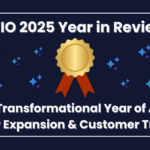
How to choose the best timekeeping system?
Quick links
-
Introduction
-
What is a timekeeping system?
-
What are different kinds of timekeeping systems?
-
What are important features of a good timekeeping system?
-
What other systems the timekeeping system needs to integrate with?
-
Conclusion
Introduction
To pay your hourly employees, you need a timekeeping system that can accurately record the hours worked by your employees. There are many timekeeping systems in the market and as an employer, it may seem daunting to choose one. In this article we will provide you with the information you need to choose the best timekeeping system for your business.
What is a timekeeping system?
A timekeeping system, also known as timesheet system or clock-in clock-out system, allows your employees to record the hours they worked. In the past, there used to be punch-in, punch-out cards on shop floors for employees to record their time. While some employers still use that system, the nature of work has changed so much that the requirements for the timekeeping have become more complex.
What are different kinds of timekeeping systems?
The timekeeping systems vary from simple manual punch-in punch-out systems to sophisticated electronic systems.
Manual timekeeping
There are many industries where hours worked are still recorded manually. For example, in the construction industry, quite often, employees at construction sites manually record their time in the timesheets. The site supervisor collects all the timesheets and at the end of the workweek delivers these timesheets to the payroll department where the payroll administrator manually enters the timesheet data into their payroll system so that the employees can get paid. There is lots of manual data entry, these systems are prone to errors and running payroll is quite an ordeal.
Kiosks based systems
For businesses where employees come to a fixed location to perform their work e.g. a shop floor or a fixed office location, there are kiosks where employees can identify themselves and clock in and clock out their hours. Sometimes employers will use a desktop computer or an iPad which has the timekeeping system installed on it to act as a kiosk. For identification purposes, employees can enter a unique pin code provided to them or use biometrics. These systems generate timesheet data that can be either manually or electronically entered into the payroll system.
Smartphone based systems
There are lots of smartphones based timekeeping systems in the market. These systems are installed on the smartphones and are typically enabled with the “Geofence” feature. Geofence feature tracks the location of the employee at the time of clock in and clock out thus allowing the employer to control and monitor the location of time entry. The timesheet data captured on the smartphone is transferred electronically to the backend systems. These systems are used by employers who have employees on the field like contractors working at multiple locations in a day or landscaping crew moving from one location to another etc. These systems typically come integrated with a payroll system so that the data is electronically transferred into the payroll system. If not, these systems allow the employer to download timesheet data in different formats like Microsoft Excel, csv etc. which can then be uploaded into the payroll systems.
Based on the type of your business, you have the option to utilize precise project time clock app. Some of these apps are designed for remote-based workers that need to project time from their office, while there are other options designed for field workers that are actively moving from one working site to the next. For example, Workyard’s timesheet app is particularly useful for contractors and owners of construction businesses.
What are important features of a good timekeeping system?
Here is a list of features you may want to consider before selecting a timekeeping system.
Fixed location versus GPS enabled
If your business requires that your employees clock in and out from a fixed location in your office, you should look for kiosks based systems. You can use a smartphone based timekeeping system for fixed location employees but you should know that Geofencing has limitations on pinpointing the exact location so your employees might be able to clock in as soon as they enter the “geo fence” but still not reached the exact location where you want them to be.
If you have a workforce deployed in the field, a geofence enabled smartphone based timekeeping system will work best for you.
Is scheduling important to you?
If your business requires shift management or scheduling of your workforce which varies on a frequent basis, you should make sure your timekeeping system also supports shift management or scheduling functionality. This is very typical of systems used in retail stores, restaurants etc.
Integration with other systems
If your business requires your staff to use a unique system like an EHR (Electronic Health Records) solution in case of clinicians working for a mental health service provider, you may need a timekeeping system that easily integrates with the EHR system.
Does your system need to be DCAA compliant?
Federal contractors who work for DoD (Department of Defense) or other government agencies are required to use a timekeeping system which is DCAA (Defense Contract Audit Agency) compliant. DCAA performs frequent audits and contractors who are not compliant might incur penalties and in some cases termination of contracts.
Do you want to track mileage as well as time?
If your employees/contractors work in the field, moving from one job to another, you may need a system which has a Geofencing feature as well as mileage tracking feature so you can accurately track time as well as distance traveled of your crew.
What other systems the timekeeping system needs to integrate with?
The most important system the timekeeping system needs to integrate with is the payroll system because the hours worked data is used to pay the hourly employees. Many payroll system vendors like UZIO offer an integrated timesheet system. If your timekeeping system is not part of your payroll solution, you should look for a system that easily integrates with the payroll solution you are using. In the worst case scenario, where there is no integration, you will have to manually enter the timesheet data into the payroll system.
In some cases, employers may also need their timekeeping data to be integrated with their accounting system.
Conclusion
There is no dearth of timekeeping systems in the market. You should choose one that meets your unique business needs and easily integrates with your payroll system.





